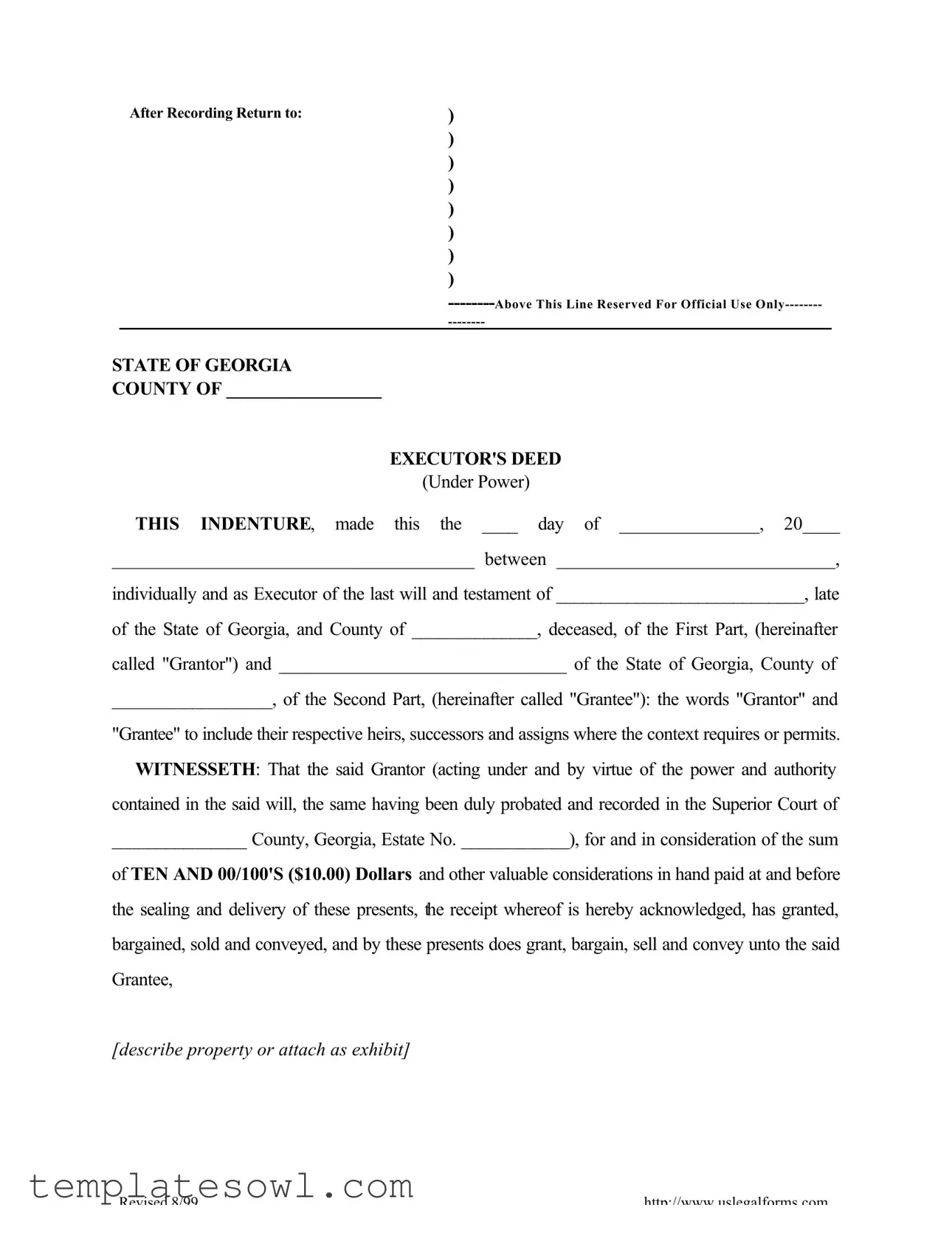|
After Recording Return to: |
) |
|
|
) |
|
|
) |
|
|
) |
|
|
) |
|
|
) |
|
|
) |
|
|
) |
|
|
--------Above This Line Reserved For Official Use Only-------- |
|
|
-------- |
STATE OF GEORGIA |
|
COUNTY OF _________________ |
|
EXECUTOR'S DEED
(Under Power)
THIS INDENTURE, made this the ____ day of _______________, 20____
_______________________________________ between ______________________________,
individually and as Executor of the last will and testament of ____________________________, late
of the State of Georgia, and County of ______________, deceased, of the First Part, (hereinafter
called "Grantor") and ________________________________ of the State of Georgia, County of
__________________, of the Second Part, (hereinafter called "Grantee"): the words "Grantor" and
"Grantee" to include their respective heirs, successors and assigns where the context requires or permits. WITNESSETH: That the said Grantor (acting under and by virtue of the power and authority contained in the said will, the same having been duly probated and recorded in the Superior Court of
_______________ County, Georgia, Estate No. ____________), for and in consideration of the sum
of TEN AND 00/100'S ($10.00) Dollars and other valuable considerations in hand paid at and before the sealing and delivery of these presents, the receipt whereof is hereby acknowledged, has granted, bargained, sold and conveyed, and by these presents does grant, bargain, sell and convey unto the said Grantee,
[describe property or attach as exhibit]
Revised 8/99 |
http://www.uslegalforms.com |
TO HAVE AND TO HOLD the said tract or parcel of land, with all and singular the rights, members and appurtenances thereto, to the being, belonging, or in anywise appertaining, to the only proper use, benefit and behoof of the said grantee forever. IN FEE SIMPLE: In as full and ample a manner as the same was held. Possessed and enjoyed, or might have been held, possessed and enjoyed, by the said deceased.
IN WITNESS WHEREOF, each grantor herein has hereunto set hand and seal, the day and year
first above written.
Signed, sealed and delivered
In the presence of:
____________________________ |
|
(Witness) |
___________________________ (Seal) |
|
(Grantor), Individually and As Aforesaid |
_____________________________ |
|
(Notary Public) |
|
|
___________________________ (Seal) |
|
(Grantor), Executrix and As Aforesaid |
